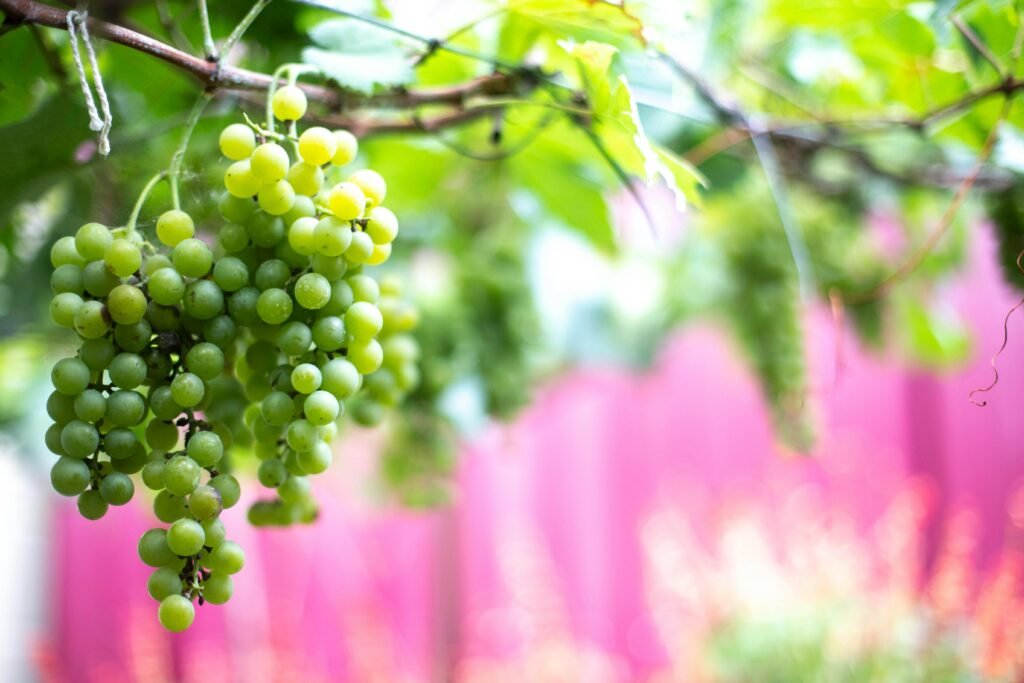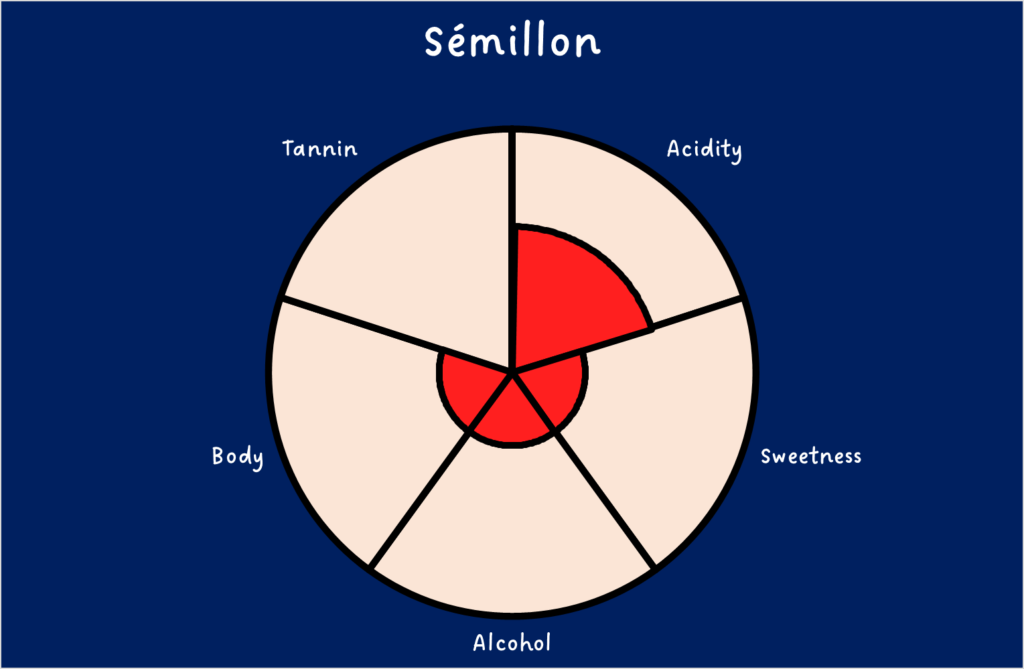
Nearly noble grape varieties: Sémillon
If you are a fan of white Bordeaux wines (and why wouldn’t you be?) you’ve probably tasted Sémillon as part of a blend. Once one of the most planted varieties in the world, it has fallen out of favour. It is, however, a bit of an unsung hero. In this post we’ll explore why it deserves nearly noble status.
About the grape
France’s third most planted grape is white skinned, late budding, early ripening, resistant to cold weather and thrives in sunny locations. This is a vigorous producing vine, which grows berries (grapes) which are thin skinned and golden in colour. This grape is noted for its high sugar content.
Why does it deserve its nearly noble status?
Complex dry white wines – This grape tends to produce more full bodied wines, and with age develops honeyed, dried fig, toasted almond, flavours and an oily texture. This is a wine which suits oak aging, which adds complexity.
Wines with huge aging potential – These wines generally age well as they are slightly fuller bodied than other white wines. 5 years is likely going to improve the slightly thin tasting young wines, and up to 20 years is possible. With age comes honeyed and nutty flavours. In Australia a mineral rich, complex style of white wine is produced with good aging potential.
The sweet wines of Sauternes – This variety is one of the main components of the infamous Sauternes wines. These sweet wines have luxurious orange peel, marmalade, citrus fruits, beeswax and honey flavours. These wines are not the light botrytised wines produced by Riesling, but a little heavier and more serious.
Its role in Bordeaux Blends – Not only does this wine make an excellent varietal wine and a sweet wine, but it can also significantly enhance blends. It can add body when blended with the fresh Sauvignon Blanc variety, as well as balancing the tart acids.
Versatile styles – This variety can produce dry fresh chardonnay like white wines; richer creamier more full bodied styles with slightly riper fruit flavours; marmalade flavoured sweet wines; and great blends. Due to lower acidity it tends not to produce the most outstanding sparkling wines.
Profile
There are a number of different styles, but a typical dry Sémillon at various ripeness levels will have:

These wines can have various ripeness levels. Less ripe varieties typically have flavours of lemon, apple, pear. Riper versions tend to be creamier, fuller bodied with yellow peach and minerality. Sweet wines typically have orange peel, marmalade, beeswax, and chamomile aromas and flavours.
Production
As already indicated Bordeaux is the natural home of Sémillon, and France comprises over half of the worldwide production. The next largest production area is Australia. There are also productions in South Africa, and South America (Argentina / Chile). It pairs well with white meats.
You’ll like like Sémillon if you like…
Depending on style – fresher oaked Chardonnays, Pinot Gris, French Sauvignon Blancs.
So have I persuaded you to try a Sémillon? If so, which style are you going to be trying? Or maybe you’ll be sticking to your Bordeaux blend or Sauternes? Whatever you decide there is so much to discover in this grape variety. I’d love to hear what you discover. Send me a message and share your discoveries. In the meantime, keep exploring this beautiful planet we live on, one glass at a time!